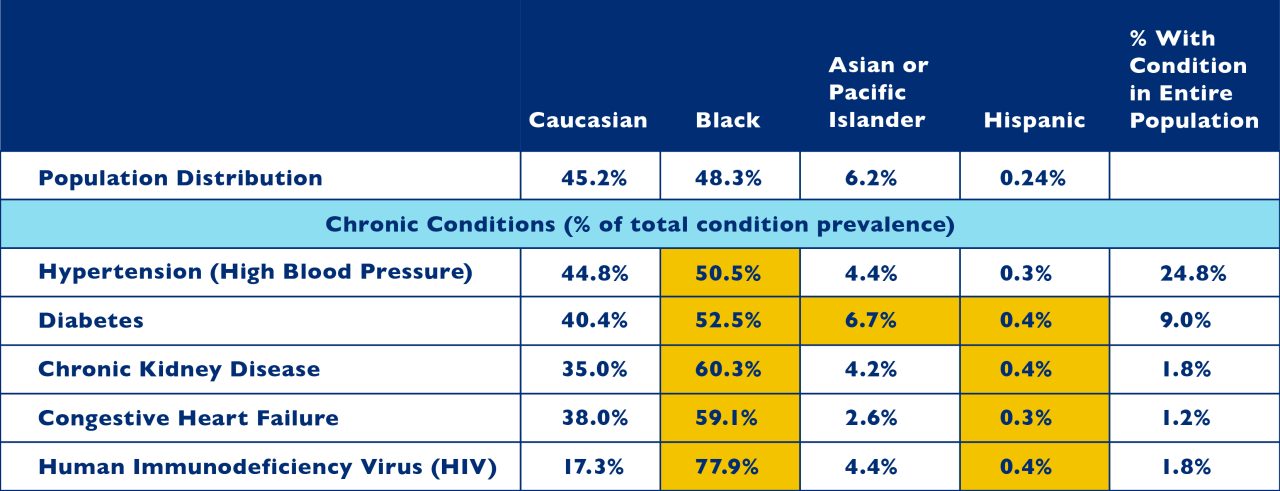
As we discussed in our recent blog post, the ACG System is unveiling advanced functionality that allows users to measure the significant impact of racial and geographical health disparities. Understanding these metrics is critical when determining the most effective way to treat a population.
Increasing evidence has already shown that certain racial and ethnic populations are disproportionately impacted by diseases, with the heaviest impacts on people of color. The ACG System enables health systems and other organizations to properly input this data and analyze these disparities in their own community.
Studies show a high correlation between race and the quality of health care provided. The adverse effects of this treatment result in poorer overall health and more expensive care for those with chronic conditions. Halting these damaging trends requires a full report of whether these occurrences exist within a health organization.
ACG System customers can input race and ethnicity data as patients are triaged for care. The System understands and accounts for the different ways in which this data is classified. Once race and ethnicity are captured, the System combines all available data to create a full analysis of whether these same disparities exist within an organization. This is the first step in understanding the magnitude of the problem and moving toward a more equitable way to deliver health care services to those that need it most.
Using a sample of data from a population of adults enrolled in Medicaid insurance, Johns Hopkins studied how well the ACG System identified underserved populations. ACG System outputs measuring disease prevalence were compared to results among racial and ethnic groups. This data was then compared to the entire population of Medicaid enrollees.
The results in the table below highlighted in yellow show a percentage of total condition prevalence over and above the total of the entire population. For example, the data sample of Black Medicaid patients was 48.3%. Within the data sample, Black patients accounted for a higher percentage of the total condition prevalence for hypertension, diabetes, kidney disease, congestive heart failure and HIV. The Asian and Pacific Islander ethnic group showed a prevalence of diabetes that was higher than expected. People of Hispanic origin accounted for 0.24% of the population, but account for 0.3% or more of four out of five chronic conditions.

The ACG System enables users to see data trends and powerful insights unlike any other program. For health organizations to truly care for their entire population, any barriers to care that patients experience should be identified and amended. By analyzing race and ethnicity, the ACG System has the functionality to identify the full impact on overall health, disease prevalence and population risk.
Like in the Medicaid example above, this analysis enables ACG System users to develop new strategies and tactics to address disparities and improve long term care. The ACG System supports the use of these variables to enhance understanding of health determinants and health outcomes.
If you have any questions or want to learn more about race and ethnicity values in the ACG System, please email us at acginfo@jh.edu. Existing ACG System customers can contact your account manager.
Follow Us